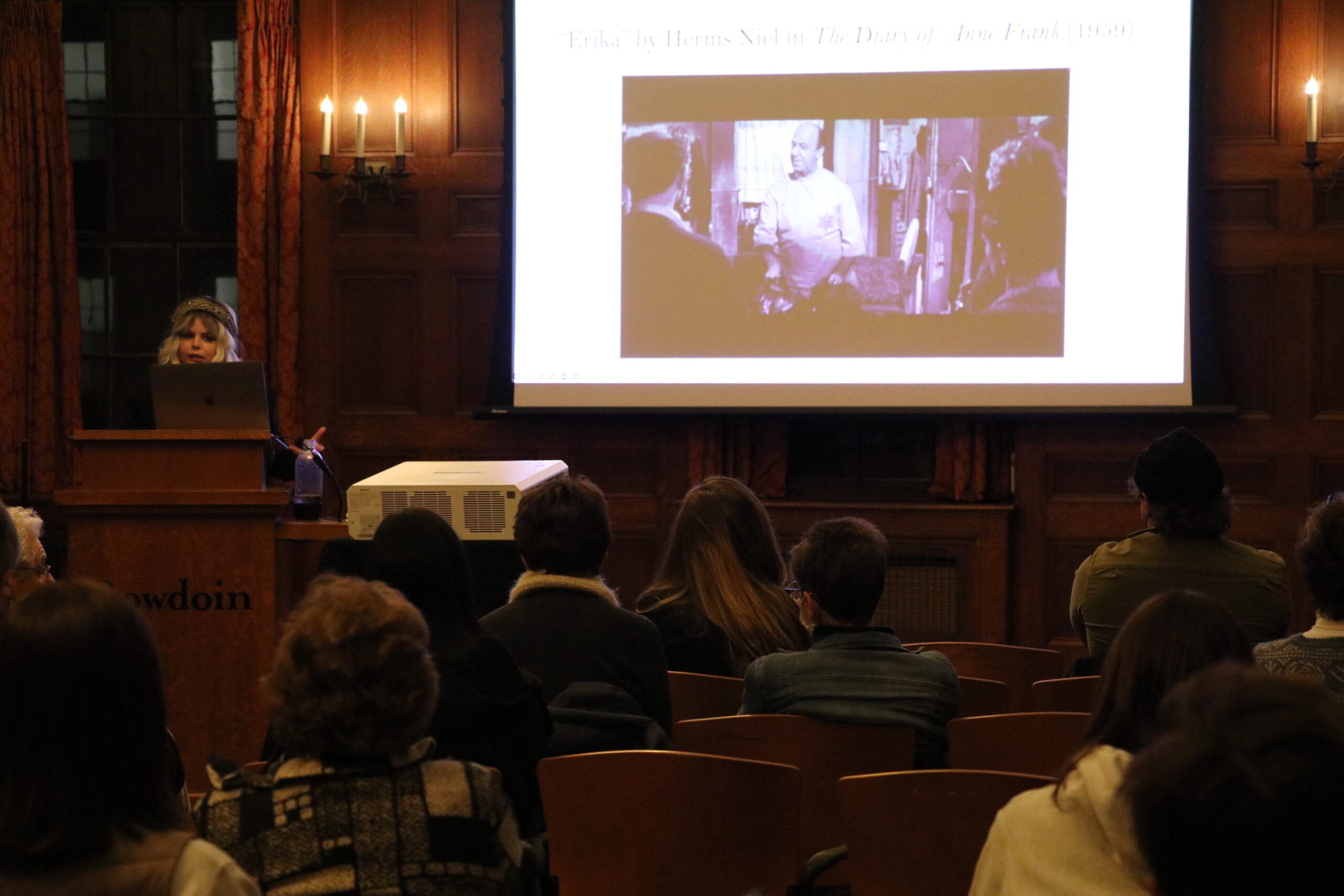Kathryn Huether discusses Holocaust memorials and sound
March 31, 2023

Visiting Assistant Professor of Music Kathryn Huether delivered a lecture on Wednesday entitled “Sounding Trauma, Mediating Memory: Holocaust Economy and the Politics of Sound.” The talk centered on how Holocaust memorial sites employ music and human voices to elicit emotions in attendees and how musical signifiers of the Holocaust have infiltrated popular culture.
Huether’s research began with her studying the ways in which Holocaust memorial sites use sound to accompany their exhibitions. The Auschwitz-Birkenau State Museum, for example, plays a recording of a children’s choir singing “Ani Ma’amin,”
or “I believe,” as attendees enter the first exhibit.
“This conflation of the Ani Ma’amin with the exhibit also curates this overarching effect that can be quite confusing to some,” Huether said.
Huether also spoke about how museums use vocal survival testimony and how individual survivors’ testimonies change as they age.
“The voice elucidates elements of trauma by a local outfit and just deep articulation. It seemingly conveys an access into survivors’ humanity, such as their own emotional responses exhibited through vocal inflection and their physical body, so when they’re gesturing, that also influences how their message is being received,” Huether said. “This humanity and physicality resulting [is] not a solidified and unchanging testimony, but rather one that is fluid and malleable.”
Huether noted the efforts to preserve witness testimony with creations like interactive holograms—which allow a visitor to experience talking to a Holocaust survivor by using pre-recorded interviews and artificial intelligence—do not capture the dynamism of witness testimony.
“Once asked a question, they respond, and this is based predominantly off an algorithm,” Huether said. “So while it seems as though it is fluid and changing, this is actually a preset voice.”
“This is so overwhelming, but I think it is really important the work Dr. Huether is doing to raise awareness,” said Victoria Jang ’26, who took Huether’s Music and Everyday Life course last semester.
Huether said that the way and frequency with which the Holocaust itself or its musical signifiers are portrayed in popular culture has led to its normalization. One such film is the “Diary of Anne Frank,” which Huether argued romanticized Frank’s story.
“There was little more in the ‘Diary of Anne Frank’ and nothing that would upset audiences’ emotional or psychological equilibrium,” Huether said, quoting Holocaust scholar Deborah Lipstadt. “They also Americanize the story by ending it on an optimistic note. They not only avoided any reference to an ultimate fate … but presented the ultimate message of the Holocaust as one of hope and faith and the ultimate goodness of humanity.”
Another such way that Huether argued popular culture has oversaturated the Holocaust is through the use of the theme from “Schindler’s List.” The song has been used frequently in figure skating competitions since the movie’s release in 1993, with some skaters performing a Hitler salute at the end or wearing a Star of David.
When one German figure skater, Nicole Schott, skated to the theme song, she received much more online condemnation than her counterparts from other countries for performing to the song.
“And so who is actually allowed to do this when it has in fact become canonized?” Huether asked. “She did not wear the red coat, she did not wear the Star of David as others have done, she did not fall down and give us a clear salute.”
This phenomenon has occurred on TikTok as well, Huether said. The marching song “Erika,” used by the German military during World War II, now accompanies videos on the app to joke about gas chambers and the “Heil Hitler” symbol 88.
“[The TikTok videos] drastically influence our understandings and interpretation of the Holocaust, and also dangerously operate for this mutation of normalizing it, of making it something that’s just everyday,” Huether said. “And these platforms … are fertile ground for hate and widespread misinformation.”
Huether ended her talk by looking to the future of Holocaust studies, as most living Holocaust survivors near death and technology is seen as the answer to preserving historical memory.
“This future may not necessarily forge promising new ways, but we do need to address the modes that already exist,” Huether said. “And with that, if you visit the Holocaust museum, you’re greeted with this prompt to think about what you saw, but I also ask you to think about what you heard because that can drastically change your understanding as well.”

Comments
Before submitting a comment, please review our comment policy. Some key points from the policy: